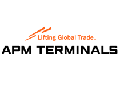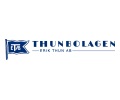Dry bulk rates look set to stabilize to profitable levels in the years to come says market analyst
With the Handymax and Handysize shipping sector currently offering the best scenario in terms of supply/demand model, the dry bulk market looks set to remain at profitable levels for the years to come, despite the large oversupply of vessels. Of
course, according to an interview to Hellenic Shipping News Worldwide by Mr. John Cotzias, from shipping consultants and brokers N.Cotzias Shipping Group, a company active in the sector since 1893, there are still a lot of dangers lurking in the waters of the shipping industry, especially to particular segments of the market, which don’t appear able to escape overcapacity issues, even as the global economy and most importantly, emerging economies, retain their growing prospects for the future.
What’s to expect until the end of the year in terms of dry bulk freight rates. Will the market end the year on a higher note?
If we had a crystal ball we would definitely try to replicate it, then give it to our Chinese friends to make many more millions of cheaper copies of it, market it export it to the whole world, sell it and a make a huge fortune out of it”¦ but unfortunately we don’t,,,
However speaking of the Chinese, we have come to a simple mind easing scenario that we would like to share with the readers of Hellenic Shipping News.
China has actively entered into transforming Xu Zuyuan’s vice Minister of Communications public statement in 2006, that China seeks the development of a “reach for the stars” type of shipping fleet, create a massive improvement in shipping related infrastructure, and to open up the shipping sector to the outside world. In 2010 we can say that China has developed a massive shipbuilding industry, has opened shipping finance to non-Chinese interests, has attracted Chinese-Foreign JV’s and/or co-operations and has actively proceeded with direct investments in other countries that facilitate Chinese trade. At the same time Chinese controlled fleet (which we have taken a less than politically correct thought), including Hong-Kong and Taiwan in the stats, presently control 16% of the world fleet with Greeks controlling 15%. This gives the Chinese a clear dominant position that will alter according to our opinion the freight markets.
From one hand China needs ships to supply their cargoes, with their primary goal to keep seaborne transportation costs as low as they can practically be. On the other hand, China is a shipowner too, and that way pushing freight levels low, beyond breakeven levels will not be a wise move. On this simple assumption, that a fine line will not be crossed, we expect that the freight levels will not go beyond super profits, we will never see 100k’s and even 200k’s per day that is for sure, but we will not see freight levels moving into low 4digit k figures too. This gives us some degree of assurance that dry bulk shipping may not easily suffer but at the same time will not have such wild parties again.
How do you see future dry bulk tonnage supply shaping up in the future, with regards to demand?
Demand and Supply, Supply and Demand”¦ which is the most important? Supply of ships is important to keep the fleet strong, renew the average age, improve the quality and efficiency of the ships, enable new ship designs to serve better ports, and deliver all seaborne cargoes with a safer ship.
However demand is the essential driving force for shipping. If there is no need for goods all these super new ships will just sit there idle, cost money, and earn nothing! How can we secure the future of our industry? Well simply by not making extreme moves that will seriously affect the equilibrium price dictated by S&D. New orders have to be balanced, have to be based on logic, and above all not on greed. Increased demand for goods will be relevant to the rate the world will be growing. Presently only the developing countries fuel with substantial growth and that is normal because these countries have the need to grow and need to create more in terms of infrastructures making them much more dependent of a steady inflow of raw materials and as the living standards improve they will consume more.
We expect this growth to continue, we expect that the developing countries will keep the 6%, 7% and near 10% of GDP growth throughout 2011, and the remaining developed countries will have to shape up and get their balances in order, to regain growth and get more industrial production which presently is not performing well.
Which sector appears to be facing the most troubles and why?
According to our overcapacity model that we monitor on a monthly basis the sector with the most evident threat in terms of greater percentage of extra carrying capacity being on order is the Post Panamax size segment. There are 201 vessels in service of 20.4mil dwt, with 244 ships on order of 24.6mil extra tons waiting to be added. Then there are the VLOC’s that are going to cause a tremendous stir in the market, presently there are 80 Very Large Ore Carriers in service of 23mil tons and there are another 87 ships on order of a massive 29mil dwt haunting the market. These 400.000 tons ships that are expected to replace 2 capes per vessel, will alter the entire iron/ore current market status. Only VALE of Brazil has 27 VLOC’s on order of a total of 11mil dwt carrying capacity waiting to be delivered until 2013. China Shipping Development Co has 8 310,000 ships on order, Zodiac 6 x 320,000 dwt, TMT 7, Nippon Yusen Kaisha 8, BW Fleet Management 4, Neu Seeschiffahrt 5. Then the present situation in the cape sector is not looking that fantastic either. 1002 Capesize ships are presently under operation of 175mil tones dwt. 435 ships are scheduled to be delivered of a total of 80mil tons, that will push up the supply of available tonnage at exactly the same period when the pressure from the VLOC’s wil be mainly felt in this size segment. How will Capes survive when the total quantity of the larger than Panamax fleet of ships from 219mil tons will be increased by a further 134mil dwt??? This is a 61% increase in 4 years time. Will the demand follow in such a way? Will available cargoes increase by 15% per annum? Practically speaking No way”¦!!!
On the other hand the Panamax sector has 1691 ships of 125mil dwt, with 702 ships of 55mil dwt on order. 40% extra capacity is waiting here, Supramaxes are 1167 ships of 64mil dwt, with 709 ships of 40mil dwt on order a serious threat if this extra 63% actually gets constructed and delivered.
By contrast which segment of the market is the most “fortunate” by means of a smaller ordebook?
Very easily as the figures stand out it is the Handymax size segment that has the least of fears from newbuilds. The Handymax active fleet consists of 989 ships of 44.6mil dwt, with an orderbook of just 40 ships of 1.8mil dwt! Most owners have opted to go for the larger Supramax vessel and have left the <50k ships feeling lonely. We expect that the current fleet of 989 handymax vessels has the lowest threat of newbuilds and poses the greatest investment possibility as the current fleet is old, and any new ship in this size segment stands out and will be less affected in case the market gets suppressed. It is worth noting that 85% of the fleet, 832 ships of 37mil dwt are built before 2000. Also with the overage problem, and the continual scrapping of these older ladies, younger ships will have less competition in the near future. The Handies also pose a good investment opportunity as this size segment has nearly 3,000 ships in active and in service of 85mil dwt tons with 788 ships on order of 25mil dwt. This is actually the lowest percentage of new fresh carrying capacity that we feel is totally controllable. In the Handysize sector 1971 ships of 55.3mil dwt, are all built prior to the year 2000 and this makes 65% of the total fleet.
Do you think that the looming oversupply of vessels will weigh down on the market, or is there any room for that to change, through an increase of cargo demand, or even newbuilding cancellations?
In N. Cotzias Shipping Consultants (NCSC) we have run an econometric projection model based on a variety of assumptions taking into consideration the known to us cancellations, the much needed deletions from the active fleet in terms of scrapping, casualties, total losses and lay ups, and also the additions to the fleet, the NB deliveries, all the pending orders and last but not least the new fresh orders for more Newbuilding vessels. This model has produced some interesting scenarios that show that presently there are 73346 active ships of 1.4bil dwt capacity. There are presently 7376 ships on order that total 432 mil tones dwt. This NB orderbook consists of 10% in terms of ships/units and/or 30% in terms of the present dwt carrying capacity.
During the past 12 months, 1028 ships have been cancelled of 71 mil dwt and these cancellations represent 14% of the orderbook in terms of ships/units while 16% if the total carrying capacity in dwt. At the same time and always during the past 12 months, 1245 NEW fresh NB orders have been inked and these total to 117mil dwt. Scrapped total loss and ships that have been withdrawn from the active fleet amount to 2100 ships of a total of 45mil dwt.
According to our model we see that if the frenzy of new fresh orders continues and we also keep the same pace of deletions from the active fleet and the cancellations of the existing orders continue per se, 71mil dwt cancelled + 45mil scrapped/deleted are countered balanced in full by the 117mil of fresh dwt placed in the form of more NB’s.
Deducing from the above we only have to fear from the 7376 pending ships on order and the dramatic headache that the extra 432mil tons of carrying capacity will add to the existing active fleet. This is a huge headache as a 30% increase in the supply of ships over a 4 year period, will have to be balanced with an equal increase in world growth. 7.5% per annum is the required world GDP growth that we will need to see over the next 4-5 year period, and given the current economic circumstances that does not pose any realistic and pragmatic way of achieving it. The developing nations and the growth of China, Indonesia, India, Brazil, Russia can achieve a figure close to 5-7% per annum but the developed world drags the world GDP growth to a max figure of 3.5% p.a.
Unless owners and investors are governed by prudency and forward anticipation and proceed with a serious slowdown in new fresh orders we don’t see any real solution to the possible time bomb that we have triggered”¦ !
As we mentioned already there are definitely some positive economic growth signs that we hope will drive the market further on the demand side, but we have to take care of the supply side which all shipping professional feel it, understand it and above all control it. Greed shouldn’t cause us to shoot our own foot.
Is the scenario of a new huge market for ship owners in India and its coal needs materializing?
A closer analysis shows that the steel industry accounts for about 50% of the total demand for dry bulk tonnage. This includes shipments of iron ore and coking coal, manganese, ferroalloys, limestone, iron and steel scrap, and the trade in finished steel products. China has developed most demand for the import of these raw materials and the export of their produced finished products. India could well be the next drive force of our Shipping industry. However we have some objections as to how easy the Indian Growth and Expansion plan will be put in action. China had a plan that was and is closely and methodically planned and more importantly executed. India on the other hand posing 1.2bil population, a much lower per capita income, and even lower living standard than China, will definitely need to improve and bring up to par, the standard of living of all social levels of the country. For example if we take into account that the consumption of Crude oil per capita per annum in India is only 1 barrel/capita/annum with Chinas consumption being 2 barrel/capita/annum, Europe’s 15 barrel/capita/annum while USA citizens consume more than 25 barrel/capita/annum. Imagine India being able to absorb 1.2 barrel/capita/annum and China to achieve 2.4 barrel/capita/annum in 2-3 years from today. A 20% increase in both countries will mean that 2.6 billion people will consume more than 550 million barrels of extra crude oil in these 2-3 years. This will definitely be good news for the Tanker industry as this extra demand will be adequate to support more than 170 extra VLCC’s per annum! It is worth stating that the current VLCC market has 581 ships of 173mil dwt and the orderbook consists of 126 ships of 40mil dwt, so an obvious overcapacity issue can’t be seen in the VLCC size segment. It is simple statistics that can provide great signals in our radar screen, and these points may well be points to avoid or waypoints to steer to.
India is a prominent market but we should not rule out the importance of Indonesia. Being the 4th most populated nation in the world, with 238 mil people, is ranked after China, India and the USA. There are 15,700 islands of which just about 6,000 are populated. Java is the most densely populated place on our planet, with 130mil of citizens in a place that the total land area does not exceed that of our country Greece. Indonesia is included in the G20 economically strongest countries of the world, is considered a developing economy, is the second “I” in the famous BRIC terminology, and it is the domestic consumption that drives the country’s growth. It is remarkable that during the first year 2009, of the global economic crisis it was China, India and Indonesia that produced a substantial acceleration in their GDP growth. However poverty and the very low living standards of Indonesia have more than 52% of the nation’s population with a daily income if less than $2/day. The Indonesian GDP has developed well over the past 3-4 years. It stood at $511 billion USD in 2008, improved by 5.45% in 2009 and stood at $530 billion USD while the forecasts for 2010 mention a 22% y-on-y increase that will shoot it at $670 billion USD. Projections for 2015 even say that it will go to $1,170 billion. Indonesian unemployment currently stands at 7.7% down from 8.4% that were last years figures, while inflation showing a downward trend, is held at 4.8% with a projection of 4.7% for last Q4 of 2010. Indonesia has a great dependency from Imports of machinery and equipment, chemicals, fuel, food and fertilisers while exporting Crude Oil, natural gas, electric appliances, forestry products, textiles and fabrics and elastics and rubber tires. China has invested heavily in building energy plants in Indonesia, Sumatra Java and Kalimantan. Japan, South Korea USA and European countries are countries that have already invested in and are betting on Indonesia’s growth and will definitely invest more as the orama of Indonesia’s president Susilio Bambang Yudhoyono is to keep the annual growth of the country to more than 6.6% per annum until his presidency expires in 2014. It only takes an important and inspiring leader to project his nation’s orama, convince his people to work hard towards achieving and making this dream a reality.
Coming back to the issue of India we strongly believe that India will be a driveforce for the smaller ships and also will require many infrastructure works to create better ports and better conditions for receiving more ships. We see them actively entering with more extrovert marketing in the Shipbuilding industry, we will see more of that in the future, when the quality level of Indian built ships will become an issue of reliability, then we will also see more industrial manufacture benefiting from the cheaper labour costs. The Indian economy, however, was hit in the latter part of the global recession and the real economic growth witnessed a sharp fall, followed by lower exports, lower capital outflow and corporate restructuring. It is expected that the global economies will continue to sustain in the short-term, as the effect of stimulus programs is yet to bear fruit and tax cuts are working their way through the system in 2010. Due to the strong position of liquidity in the market, large corporations now have access to capital in the corporate credit markets.
For the India GDP in 2008, reported numbers were at $1.2 billion, United States dollars. From the end of that year to the end of 2009, a small increase of 2.43% occurred, putting 2009’s GDP at $1.24 billion. At that point, the country was in the number 11 position for world rankings. Experts believe the change from 2009 to 2010 will be slightly greater but still only a 10.62% increase. With that, the GDP is being forecasted to hit $1.4 billion. However, experts believe a greater change will occur by the end of 2015, pushing the GDP out to $2.2 billion in US dollars So there will be definitely great interest coming from India in this decade.
Do you think that those owners who preferred to invest in new building orders have made the right choice?
This is a tricky question. Not all decisions to invest in a newbuilding vessel are underpinned by the same investment strategy. For example an owner might have been inactive from the NB market for a long time”¦ say since 2005. He might have made moves in the second hand market, with prudent acquisitions maybe some strategically placed buys low sell high deals, and could well be sitting with some hefty amounts of cash earning practically “peanuts” as deposit interest rates are nothing to write home about”¦!!! NB Ordering gives this particular ship investor/owner the ability to refresh his fleet, expand, and at the same time, reduce his fleet overall average age. This combined with what can be considered affordable NB prices makes this move a one that has reasoning. Also a listed company that needs to use up some of its cash reserves but feels that secondhand prices are overvalued and all possible deals including resales are considered as not economical viable deals, will definitely choose to order fresh NB’s as this gives the cumulative benefits. a) cash reserves are not used up all at once as with a secondhand straight sale deal, b) the repayment is done over a 1 Β½ ““ 2 year period and this gives the extra possibility of the deal to smooth and even out the cash flow and as such instead of say 2 secondhand ships the deal could include 4 or more NB’s. c) Shareholders will also see that company they have invested is growing, and also there is a future possibility for further enhanced earnings as more earning tools will be in the water and what is also very important new shareholders may well be attracted to invest as the NB when announced will definitely create positive dynamics and generate some demand round the share price. Now all other owners ordering more NB’s might be seen as shooting at our own foot as the extra orders don’t aid the massive order book to ever expire. The massive orderbook grows as the influx of more orders just make the total tally higher and that in a time spectre of the next two years may be crucial to practically counter and even surpass any expected growth in world cargo demand.
Nikos Roussanoglou, Hellenic Shipping News Worldwide ο»Ώ

 Hellenic Shipping News Worldwide Hellenic Shipping News Worldwide, Online Daily Newspaper on Hellenic and International Shipping
Hellenic Shipping News Worldwide Hellenic Shipping News Worldwide, Online Daily Newspaper on Hellenic and International Shipping





















 PG-Software
PG-Software